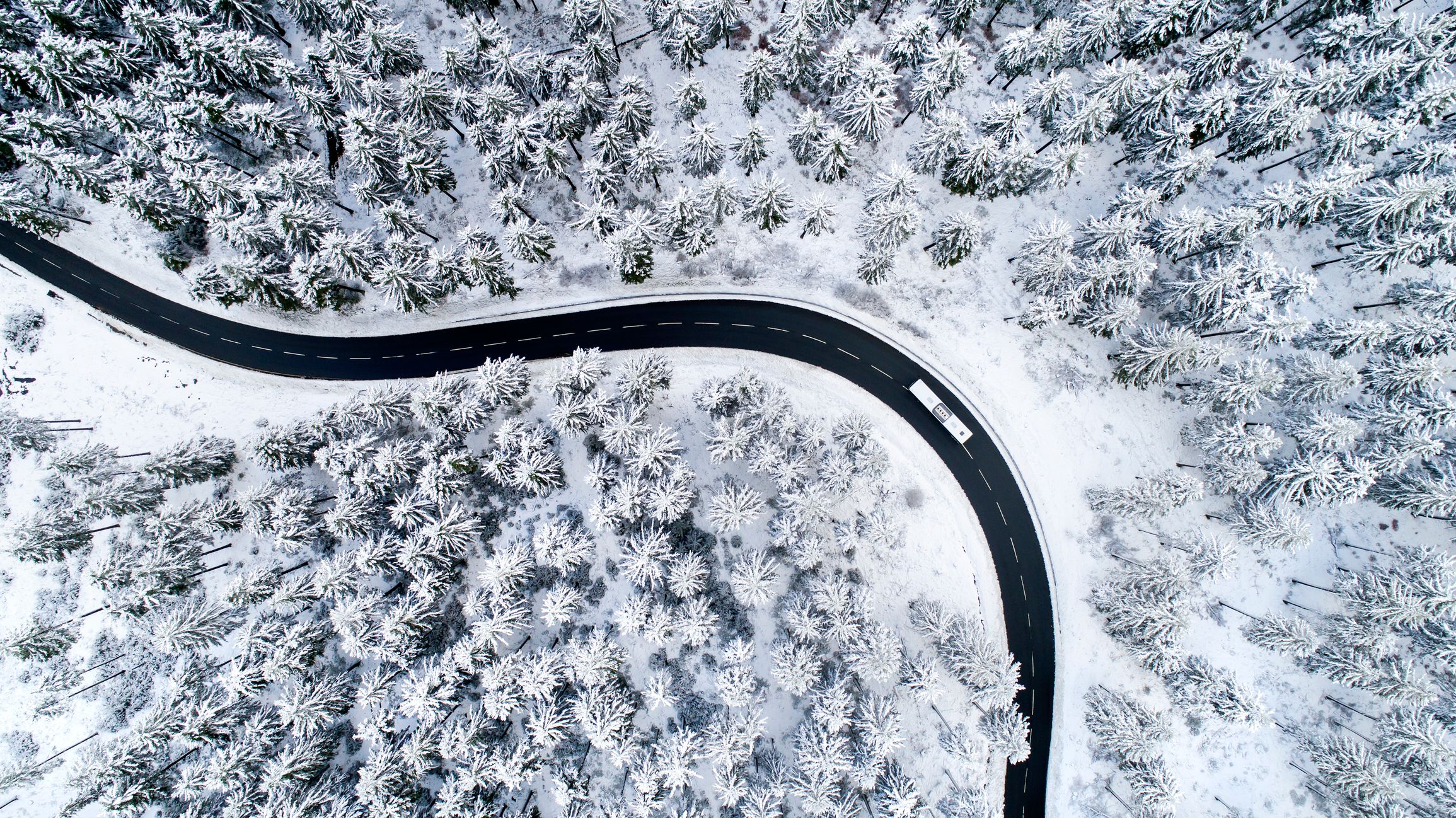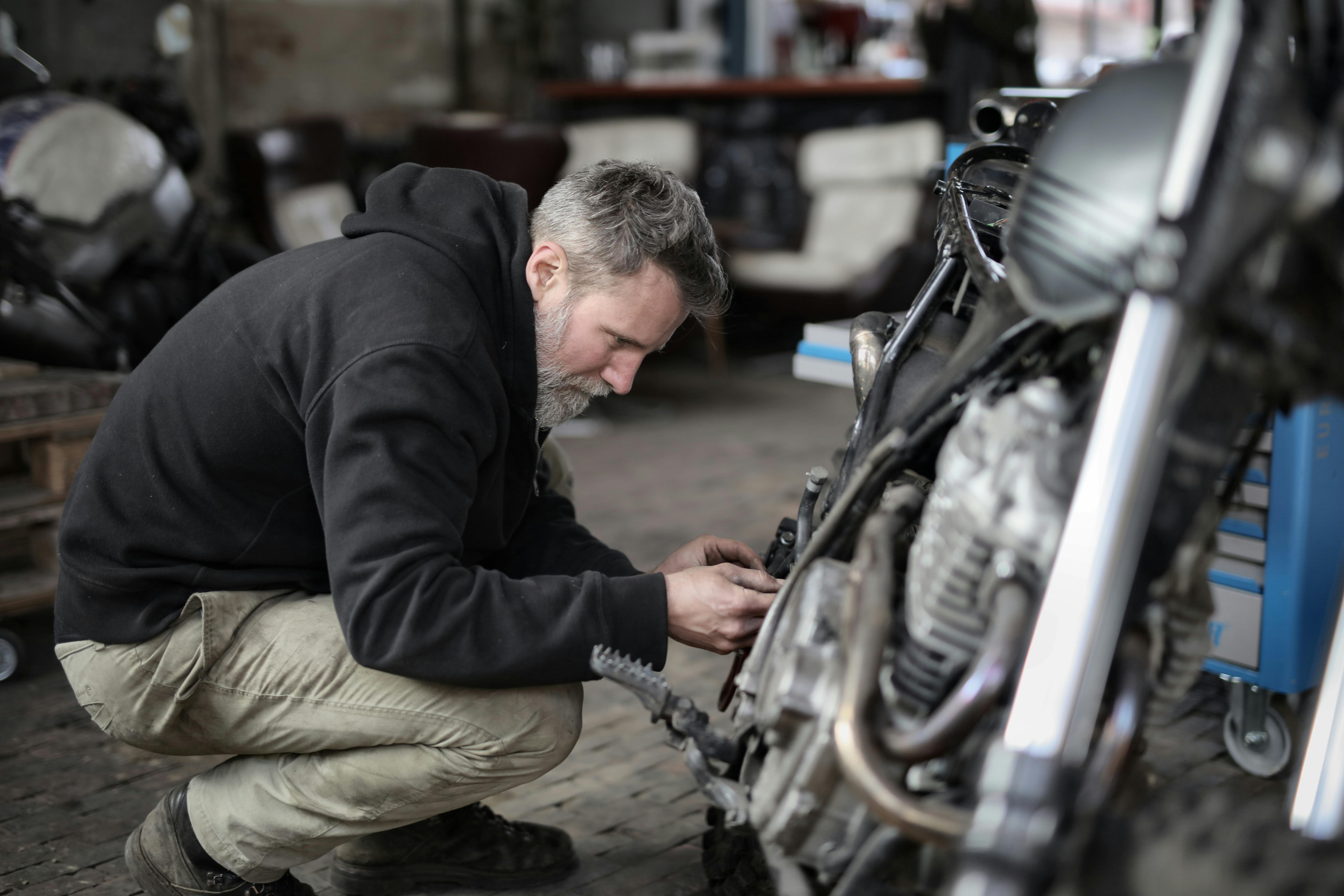
Riding in Fall and Winter
When the days get shorter and the temperatures drop, many riders store their motorcycles for the season. But with the right prep, you can still enjoy unforgettable rides during the colder months. Fall and mild winter days have their own charm: crisp air, quiet roads, and stunning scenery. To help you ride safely and with confidence, we’ve put together a few key tips for motorcycling in fall and winter, from the right gear to smart riding habits.
1. Challenges of the Colder Seasons
Fall and winter come with a few extra challenges for motorcyclists. First off, daylight hours are much shorter so it’s important to plan your rides carefully and avoid getting caught in the dark. Road surfaces also change: wet leaves, damp asphalt, black ice, or early morning frost can all reduce grip significantly. Visibility can be tricky too. Low sun can cause glare, fog can limit your view, and wet roads reflect light in ways that make it harder to judge curves and distances. And don’t forget how the cold affects your body: It reduces focus and slows down your reaction time. Cold hands and feet often lead to slower responses and reduced control.
The upside is that once you know what challenges to expect and take the right steps, you can adapt and overcome them well.
2. The Right Gear and Protective Clothing
When you're riding in colder weather, your gear isn't just about comfort, t's a key part of staying safe. If you're freezing, you're not focused. And if you're not focused, you're more likely to make mistakes.
### Layer Up to Stay Comfortable
- Wear clothing in multiple layers.
- A base layer of functional under garments helps wick moisture away and keeps you dry.
- On top of that, an insulating layer like fleece or softshell provides warmth.
- Your outer layer should be windproof and waterproof, ideally with a breathable membrane like Gore-Tex.
This keeps you flexible: As the day warms up, you can peel off a layer without giving up protection.
Hands, Feet, and Head: Your Cold-Weather Weak Spots
Cold hits your hands and feet first. Use lined, windproof gloves or consider heated grips. For boots, go for waterproof materials with thermal lining — or wear overboots for extra insulation. You can also add thermal insoles to your boots for extra warmth.
A balaclava or face mask also helps protect your neck and jaw from cold air while riding.
Don’t Overlook Visibility
In fall and winter, you're often riding in fog or low light. That means bright or reflective clothing really matters, and your helmet and bike should be easy to spot too.
A Pinlock visor or anti-fog coating keeps your vision clear when you need it most.
3. Tech Check Before You Ride
Your motorcycle needs a little more attention in fall and winter. Cold, moisture, and road salt can take a toll on your bike’s components. A regular check helps you avoid surprises on the road.
- Tires: Rubber gets harder in the cold. Make sure your tread depth is still adequate and check your tire pressure often. It drops faster in low temps.
- Lights: Shorter days mean more time riding in the dark. Check your headlights, brake light, and turn signals to make sure you can see and be seen.
- Battery: Cold drains energy fast. A well-maintained or freshly charged battery will save you from starting trouble. If you don’t ride often, a trickle charger can help.
- Chain and corrosion protection: Road salt and damp weather can lead to rust. After every ride, give your bike a quick rinse and lightly oil moving parts.
- Brakes: They need grip reliably, especially in wet or dirty conditions. Check the brake pads and brake fluid regularly.
A well-maintained bike not only means safety, but also longevity. Especially in the cold season.

4. Adjust Your Riding and Stay Safe
In fall and winter, smooth riding is safe riding.
Always adjust your speed and style to match the conditions. Wet leaves, shaded curves, and loose gravel can quickly turn risky. Keep a greater distance from other vehicles to give yourself more time to react, and avoid sudden movements when accelerating or braking.
In curves, steer more gently. Lean the bike slowly and only start accelerating once you're upright again. Use engine braking and the clutch with care to avoid slipping.
Plan your rides during daylight hours. Late afternoon rides are riskier because of low sun or fog. And if you start to feel cold or tense, take a break and warm up with some hot tea rather than pushing through.
5. Riding in Winter – Yes or No?
Riding in winter isn’t off-limits, but it’s definitely not for everyone. If there’s snow, ice, or slippery roads, it’s best to leave the bike parked. The risk is just too high. But on clear, dry winter days, a ride can be both safe and surprisingly beautiful.
Stick to dry, familiar routes with little to no elevation and no road salt or loose gravel. Ride smoothly, avoid hard lean angles, and stay flexible. If the weather changes, turn back rather than push on.
For frequent riders, a second bike just for winter or a naked bike with solid splash protection might be worth it. And if you ride regularly in cold weather, make sure you understand the rules around winter tires and insurance coverage. These can vary depending on your country.
Take a Break
Sometimes it’s better to pause your ride for a bit. If you're caught in heavy rain or a thunderstorm, it’s safer to wait it out. But keep in mind: Stopping under a bridge on the shoulder isn’t allowed. Always adjust your speed and following distance to match the conditions.
6. Why Fall and Winter Rides Are Worth It
Riding in fall and winter may be more demanding, but it comes with its own kind of magic. Roads are quiet, nature puts on a show of deep colors, and the light has a crisp clarity you rarely find in summer. Some of the most unforgettable moments happen early in the morning, when fog lingers in the valleys and the sun slowly breaks through.
And there’s another benefit: You stay in practice. Riders who keep going through the colder months keep their feel for the bike and head into spring with more confidence and control.
Conclusion: With the Right Prep, Riding Season Never Ends
Riding in fall and winter isn’t a gamble, t’s all about preparation. With the right gear, a well-maintained bike, and a riding style that fits the season, you can stay safe and enjoy the road even in colder weather.
Ride with care, stay aware, and remember that every ride this time of year is something special. So gear up, turn on those heated grips, and head out into the autumn sun.